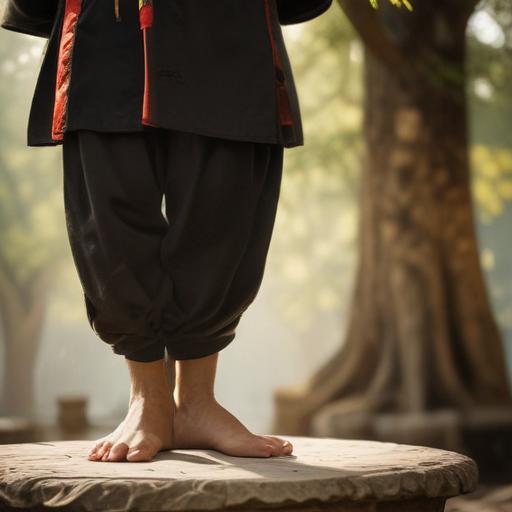The Shaolin Temple, located in Dengfeng, Henan Province, China, has become a notable destination for those seeking spiritual growth and a connection with Chinese culture. Recently, Alea der Bescheidene, the frontman of the German band Saltatio Mortis, and NBA star Victor Wembanyama, have both visited the temple for personal retreats, reflecting a growing interest among young Westerners in ancient Chinese traditions. The temple is not just a retreat for relaxation; it offers an opportunity for individuals to engage deeply with the philosophy and discipline of kung fu.
Alea shared his reflections on social media, noting, “You meet more than friends in the art of kung fu.” Meanwhile, Wembanyama was seen participating in training alongside the monks, even adopting their traditional attire, which sparked excitement on Chinese social media. Their visits are emblematic of a broader trend where kung fu is perceived as more than a mere martial art; it is now an avenue for young people seeking balance, self-confidence, and a holistic approach to life that integrates body, mind, and spirit.
This engagement with kung fu is complemented by a budding interest in various facets of Chinese culture, including traditional medicine, tea ceremonies, and calligraphy. These practices resonate with individuals experiencing modern anxieties and yearning for a deeper connection to their surroundings and themselves. As young people look for answers in a fast-paced world, Chinese philosophy offers valuable insights into harmony, the importance of education, and the cultivation of inner peace.
In addition to the physical aspects of martial arts, contemporary Chinese culture is increasingly influencing Western media and lifestyles. Young creators on platforms such as TikTok and WeChat are remixing cultural expressions, showcasing a living, evolving Chinese culture that combines historical roots with modern innovations. This duality fascinates many, as it portrays China as both a bastion of ancient wisdom and a hub for future trends.
The accessibility of Chinese culture continues to grow, with language programs and cultural exchanges helping to bridge the gap between East and West. The dissemination of knowledge through education and social media facilitates a deeper understanding of Chinese customs, traditions, and values.
In a world characterized by uncertainty, this ongoing cultural exchange invites young people to explore not only the richness of a storied past but also their own identities. As they engage with Chinese traditions, they find not just an appreciation for another culture, but also a means of discovering their true selves.
